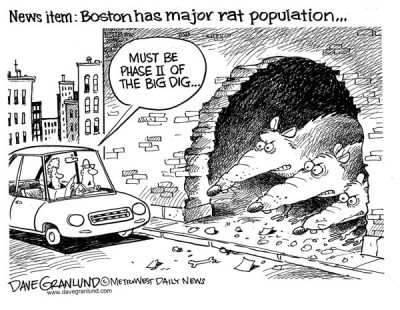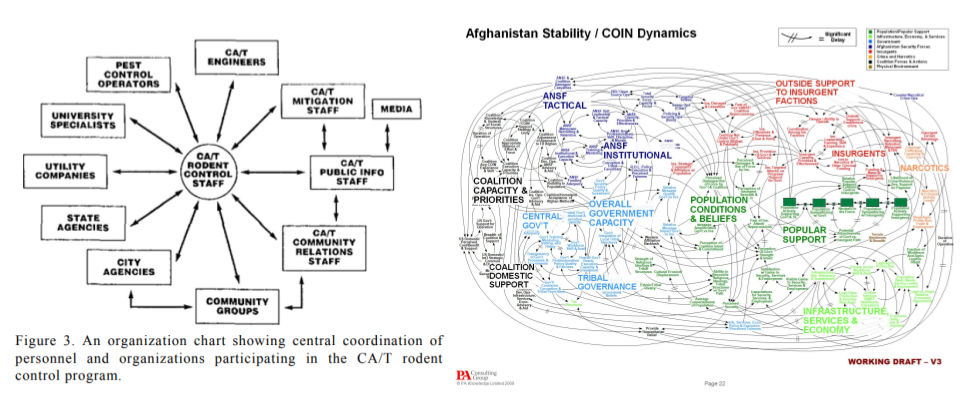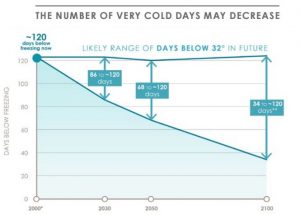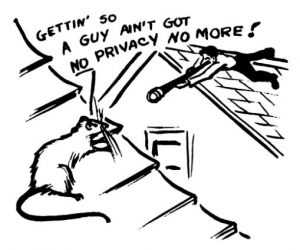This post is Part II of a series. Read Part I.
Combat Talk
No matter the scale of the offensive, military jargon was omnipresent in the propaganda produced to accompany every new initiative against Boston’s rats. By 1967 the Second Indochina War was raging overseas. At home, its methods were seeping into the public discourse. Boston’s anti-rat forces called for “continual surveillance” and advised that “the target area must be attacked in a circle from the periphery.” This approach was used that same year to devastating effect by the U.S. Army in its destruction of the village of Ben Suc in Vietnam. 10
The metaphors were reciprocal. In 1965 one Globe author, confident of being understood by a populace in the midst of its own rodent war, described Vietnam as "a place of sneaking and gnawing" where "the days gnaw at people who live them," proclaiming obscenely:

In 1971, the city wasn’t content with “holding the line” against the rat menace. The war bosses of Boston ordered staff of the Model Cities program to “join the fight” for a “block by block battle” to reclaim some territory from their old enemy. 12 The phrasing eerily mirrored descriptions of the systematic destruction of Huế in 1968. By 1981, the federally funded Urban Rat Control program had set up an office in Boston. But little had changed strategically or linguistically. The program’s leader in Boston presided over his office map like a general on campaign, and explained to journalists that “the war against rats in his target area is fought on two fronts:” Education and Eradication. 13
But that federal program represented only the scraps of a once-great army. All other funding had been cut. And in keeping with Dawn Day Biehler's recognition, in her history of urban pest control, that "the biological ecology of rats could not be separated from the political ecology of cities," it was observed as well that some Boston residents seemed better defended than others. 14 One Globe journalist blamed the problem directly on the city’s leaders. They were, he claimed, protective of the city’s wealthiest areas but loath to “waste public tax money on such minor problems as the health and welfare of its citizens.” He noted that there were parts of Dorchester, South Boston, and Roxbury where “the sight of a street sweeper coming down the avenue is as common as a Patton Tank.” The consequence of this unequal distribution of armaments was made inescapably clear by the column’s deadpan title, suggested by one of the columnist’s interviewees: “Rats eat Dorchester.” 15
Modern Warfare

That dramatic pronouncement did not, of course, come to pass. Nor were the dire warnings of rat invasion associated with the Central Artery project realized. Coverage of the Big Dig rat panic reveals how thoroughly the military metaphor had come to pervade more than the popular narrative of human-rat relations. It had infiltrated the very consciousness of the struggle’s human participants. Thus we see Boston’s “rat czar” praising the “esprit de corps” of his inspection team, which is likened to “the city’s version of the French Foreign Legion.” 16 One rat expert “exhibited a dichotomy of thought and purpose not unlike that of the professional soldier, who speaks of the enemy with respect even as he plots new ways to blow him to smithereens.” 17 Another later recalled the “tremendous battle” that had been fought for Haymarket, as though he were some kind of war-weary combat veteran. 18 And like many an alleged enemy, the rat loomed much larger in consciousness than it did in real life, as these illustrations suggest.

Like any good bureaucratic war machine, the Big Dig rat control program generated its fair share of meaningless infographics. Below left, for example, is the Central Artery/Tunnel project's rodent control organizational chart. This proud tradition of explaining warfare with phrases and arrows would go on to reach its apotheosis (so far) in the Pentagon's infamous 2009 Afghanistan countertinsurgency diagram (below right).

The Globe even acknowledged (but did not question) the use of military language in describing human relations with rats. A 1992 article on rat expert Bruce Colvin described him as a leader of "rodent control commandos." It noted his use of "language evocative of the major conflicts of the time" to describe a "hypothetical skirmish in the Great Boston Rat War." And in another remarkable passage, it seemed to foreshadow this very discussion:
Because this is modern warfare, the rat struggle indulges the familiar Orwellian circumlocutions. Order of battle statistics are closely guarded secrets. The always contentious body counts seem deliberately understated… The enemy is "neutralized," "mitigated," "controlled" or "eliminated." Never killed. 19
Here, it would seem, was an opportunity. It was an opportunity for the discourse to become self-aware, to recognize the power language could have over how we thought about other species, and to problematize the war narrative that had held sway for so long. But instead, the war remained a war. As it dragged on into the new millennium, the press kept up its hackneyed battle cries: 2002 saw an “all-out assault” on the “hordes” of rats denounced by Bostonians for “invading their neighborhoods.” 20 And in 2012, pundits reported on DCR's call for "reinforcements" for a "swift and deadly counterattack" on the rats of Castle Island. 21

Nor has the city's ancient conflict remained isolated from the changes that are beginning to shape the broader world in new and alarming ways. A 2000 article thanked cold weather for its contribution to rat mortality, prophesying that “Mother Nature may win the rat war.” 22 But by 2007 Mother Nature no longer seemed like an ally. The Globe warned that “the warmer winters the city has experienced in recent years – and probably will see more often as a result of global warming – may account for the jump in rat complaints and any increase in breeding of rats.” 23
Join us next time as we contemplate the psychological and social consequences of this perpetually violent linguistic environment.
References
- Cobb, Carl M. “300,000 Rats Plague Hub – What’s Answer?” Boston Globe, 11 Aug. 1967, p. 4. ; on Ben Suc, see Schell, Jonathan. “The Village of Ben Suc.” New Yorker, 15 July 1967, p. 28.
- Breslin, Jimmy. "Viet Nam...A Little War of Rats." Boston Globe, 8 Sept. 1965, p. 11.
- Menzies, Ian. “Rats.” Boston Globe, 10 Jun. 1971, p. 22.
- Jordan, Robert A. “Boston battles a longtime enemy – rats.” Boston Globe, 9 Mar. 1981, p. 1.
- Biehler, Dawn Day. Pests in the City. University of Washington Press, 2013, p. 138.
- Barnicle, Mike. “Rats eat Dorchester.” Boston Globe, 9 Sept. 1981, p. 15.
- Marantz, Steven. “Inspector Stays Out Front in Rat Race.” Boston Globe, 3 Apr. 1989, p.1.
- Bartlett, Ellen J. “He Has Met the Enemy and it is Rats.” Boston Globe, 10 Nov. 1988, p. 89.
- Allis, Sam. “Rat pack takes a hit in Big Dig campaign.” Boston Globe, 28 Mar. 1999, p. A1.
- Beam, Alex. “On the ready for The Rat War.” Boston Globe, 14 Jun. 1992, p. 33.
- Gomstyn, Alice. “Boston Battles a Surge in Rats.” Boston Globe, 3 Oct. 2002, p. B4.
- "Rats: Call in the cavalry at Castle Island." Boston Globe, 13 Nov. 2012, p. A12.
- Robertson, Tatsha. “Cold Weather May Prove Nature’s Edge in Rat Battle.” Boston Globe, 15 Jan. 2000, p. B1.
- “Tails of the City: Rats, rats, everywhere, but inspectors are ready – and showing no mercy.” Boston Globe, 17 Oct. 2007, p. B1. ; for Boston temperature projections, see Climate Ready Boston Final Report, p. xviii.






Add a comment to: A Military History of the Brown Rat in Boston, Part II